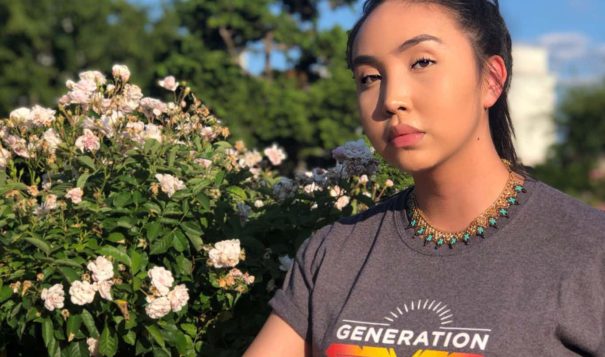News Article Article pages that do not meet specifications for other Trust Project Type of Work labels and also do not fit within the general news category.
Finally, representation: Molly of Denali

After years of erasure and dehumanization, Indigenous youth will finally have something for themselves in Molly of Denali says Charitie Ropati
In a country where media continues to misconstrue who we really are, accurate representation becomes almost shocking. Pocahontas was the first film where I saw and heard the word “Indian” on screen and the film wasn’t historically accurate. It played into the narrative of white saviorism, something I wouldn’t understand until I was older. Then it was Peter Pan. Despite feelings of uneasiness as I watched the red caricature play the flute, I saw myself. But it painted my people as if we were of the past. The combination of the fetishization of native women in the film and the reinforcement of racist stereotypes by the color of their skin made me uncomfortable as I gazed at the cartoonish Indians. I asked myself as a six-year old if those that I saw on the screen were my people, growing ashamed of how grotesque the characters were.
As I grew older, I realized that I had to ask myself whether or not these films and television shows perpetuated disparaging stereotypes? Are they harmful? Do they reinforce the harmful narrative of the “red-skinned Indian?” These are the questions that many Native peoples have had to ask themselves because of the long history of erasure and misrepresentation. Molly of Denali was different. I walked into the National Museum of the American Indian with these same questions at the premiere. When the episode titled Native Names ended I realized that Native youth would finally have a culturally accurate show, a show that they could see themselves in. I was astounded, shocked and even grew emotional because it wasn’t another culturally insensitive caricature but was contemporary, modern, and reflected the lives of Alaska Native children.

Molly of Denali has the potential to address stereotypes perpetuated by mainstream media and Hollywood. When people think of Alaska, they think of “Eskimos and igloos” but my people are more than a racist narrative given by colonizers. We are resilient, intelligent, modern, and reflect beyond the preconceived notions of “Eskimos.” We are here and we still exist, this is what the show means. There is a resurgence and revitalization of Indigenous peoples across the country, from the first Native American lead on Netflix, Sivalyna Rose, to an animated series on an Alaska Native girl, spaces previously dominated by Eurocentric ideals are being indigenized.
Representation matters.
I have never truly seen myself in Western media. PBS Kids will broadcast a show with an Alaska Native lead, there is power in that statement. This isn’t “another Dora,” this is Molly of Denali and after years of erasure and dehumanization, Indigenous youth will finally have something for themselves.
Charitie Ropati, Yup’ik, is an enrolled member of the Native Village of Kongiganak. She is a 2019 Center for Native American Youth Champion for Change and Columbia University student studying Civil Engineering and Politcal Science.
